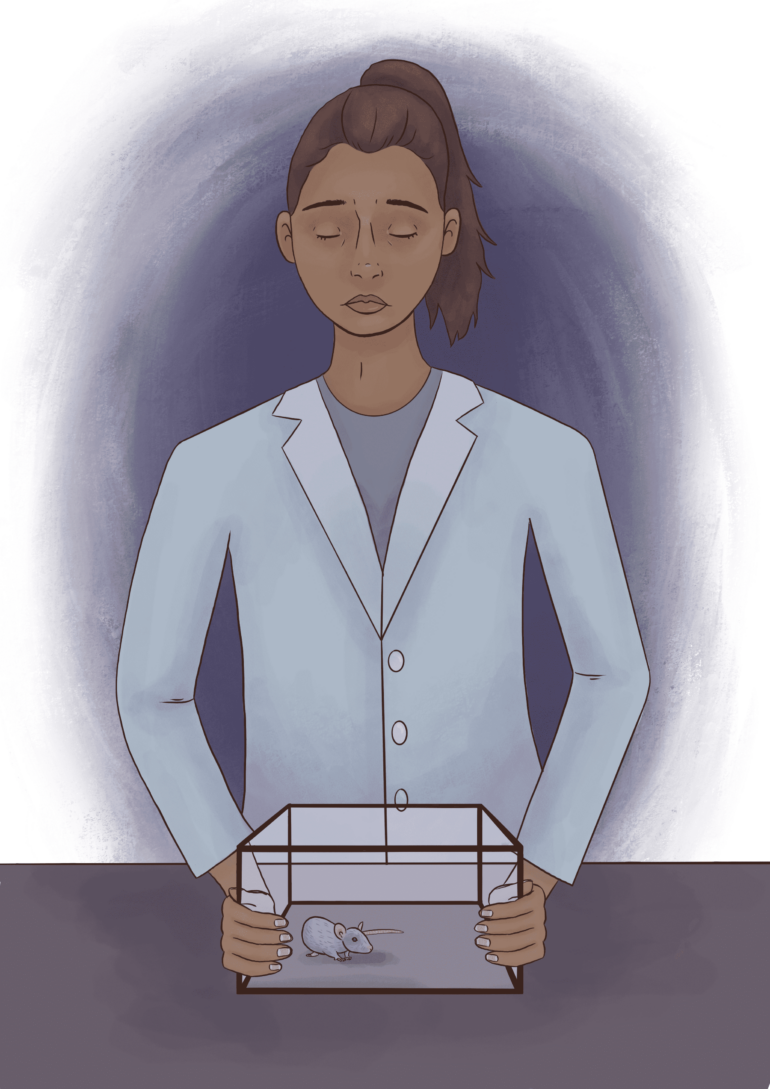Death. Simply talking or even thinking about the subject is taxing, so imagine how emotionally burdensome it would be to constantly deal with death for your job. Tis is the harsh reality for biomedical researchers who work with animal models to study human behavior and disease because animal euthanasia is a large part of their work. Most often, euthanasia is used in animal research to harvest tissue for analysis or to alleviate animal suffering. Although research institutions like UC San Diego are federally obligated to have an Institutional Animal Care and Use Committee that set strict guidelines to ensure quick and painless deaths, euthanasia is not an easy task for many lab workers—so much so that they can develop something known as euthanasia stress.
According to a recent review by Joseph T. Newsome, the Director of the Division of Laboratory Animal Resources at the University of Pittsburgh, and colleagues, “[e]uthanasia stress is the concept of being aware and psychologically challenged when faced with the task of euthanizing animals.” The most common symptoms of euthanasia stress are burnout, depression, cynicism, and a loss of motivation and compassion in the workplace.
Jonathan Wang, an undergraduate volunteer in a gene therapy lab at UC San Diego, has experienced some of these symptoms first-hand. Wang euthanizes mice via cervical dislocation—a physical euthanasia technique in which pressure is applied to the neck in order to dislocate the spinal column from the skull or brain—for tissue analysis. According to him, learning how to perform a cervical dislocation for the first time was mildly traumatic.
“It felt really jarring and I was definitely ashamed. It just doesn’t feel great thinking that I had just killed something that was once alive,” Wang said.
Although biomedical researchers like Wang cannot avoid euthanizing animals, they do not have to develop euthanasia stress. Training in stress management techniques, fostering emotional openness in laboratory settings, and acknowledging the benefits of animal euthanasia for the betterment of science and medicine are all preventive measures against euthanasia stress, according to university veterinarians Jordi L. Tremola and Angela Kerton in a recent comment in the journal Lab Animal.
Lynn Tran, a master’s student at UC San Diego who works in a cancer immunology lab, has experienced the benefits of some of these methods. Since starting in her lab in March of 2021, she has euthanized nearly 100 mice via carbon dioxide asphyxiation in order to culture their immune cells for growth and analysis. Unlike Wang, however, the act of animal euthanasia itself has not had as much of a negative effect on Tran’s mental health. While self-care activities like exercising and taking time away from the lab on weekends have helped her navigate euthanasia stress, so has the immense support from her lab.
“My lab is extremely supportive about the issues with animal euthanasia and we do often discuss it with another,” stated Tran. These conversations have greatly helped her process her feelings on animal euthanasia. “In general, my lab is very open regarding our feelings about our work and my PI [principal investigator] has built a culture of helping everyone succeed both in their work and mental health.”
Similar to Tran, many researchers feel supported in their laboratories because their research institutions
have already implemented several strategies to help mitigate the development of euthanasia stress amongst lab workers. For example, UC San Diego requires all animal researchers to take courses on how to properly work with animals. Portions of these courses discuss euthanasia’s potential impact on one’s mental health and actively encourage lab members to reach out to one another for support when struggling.
Wang and Tran would like to see even more preventative measures implemented. Wang suggested providing additional support to animal researchers through therapy while Tran emphasized the need for labs to prioritize researchers over productivity by providing breaks between experiments. Euthanasia stress is an undoubtedly difficult reality of biomedical research, and thus it’s imperative that research institutions continue to do all that they can to protect their workers from it.

